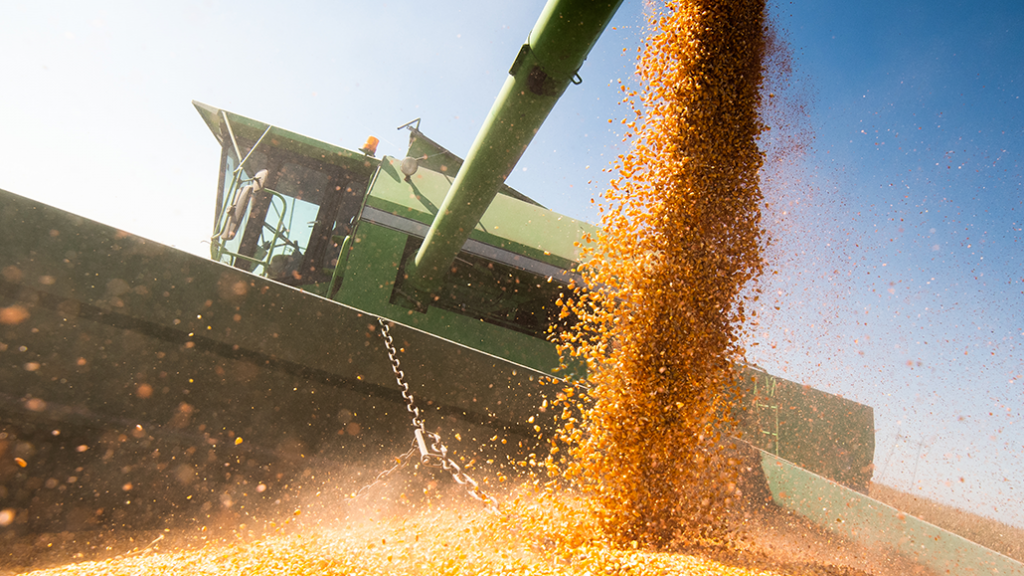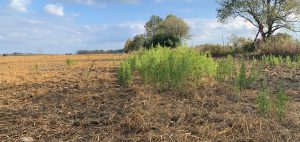Feed market growth potential
COMPLEXITY CREATES CHALLENGES

GREATER NUMBERS OF livestock, changes in animal production strategies, and novel uses are contributing to growth — or potential growth — in Ontario’s feed grain sector. The complexity of feed systems, however, makes garnering a clear picture of what is possible challenging.
| BY-PRODUCT SHORTAGES High feeding-related costs originating in the midst of the COVID-19 pandemic continue to be a lasting issue for many livestock producers, according to Megan Van Schaik, beef cattle specialist with OMAFRA. At the start of the pandemic, she says the availability and higher cost of by-products for feed – driven by supply issues – was a particularly acute problem. This subsequently put upward pressure on soy meal and other grain products as nutritionists searched for substitutes. “I took a look through my data from previous work and it looks like the rates in Ontario are typically 15 to 10 per cent,” says Van Schaik in reference to dried distillers’ grains averages in feed rations. “Inclusion rates can be pushed higher, but this will certainly be a function of price and availability.” |
LESS ON-FARM FEED PRODUCTION
A key driver in Ontario’s feed market is, predictably, the size of the provincial livestock herd. But according to Steve Duff, chief economist for the Ontario Ministry of Agriculture, Food and Rural Affairs (OMAFRA), increasing demand for feed grains also stems from a general shift away from pastures in the cattle sector.
An increasing proportion of dairy farmers, for example, are opting to buy rather than grow their own feed grains, or pasture actively producing dairy cows.
“When Ontario followed the United States into ethanol, when the province had funding for it… some were very critical of the impact that would have on corn demand, driving up feed prices. That was sort of true. What happened was, as that evolved, we were pretty far into a drive to contained feeding,” says Duff.
“It’s changed the nature of corn demand. Even in some sectors where you see more home-grown feed… they’re selling it to a feed mill who processes it and sells it back to them.”
Grain farm infrastructure has changed as well. Duff says the greater availability of on-farm grain storage, combined with more farmers willing to contract, makes it harder for livestock producers to find unpriced corn in the modern market.
“We used to have more unpriced [grain] in paid storage. Now, most is forward contracted and stored on farm operations. It means it’s just that much less accessible,” he says, adding those purchasing feed also frequently find the costs of producing equivalent amounts of grain to be more expensive.
Fundamentally, Duff reiterates there are no hard numbers for the average tonnage of feed demand in the province because there is no defined source measuring that demand. The same applies at the national level. The only feed demand calculation derives from the total number of animals and meat produced.
Ontario and Canadian meat production are indeed growing over time, however, and feed demand with it. The shift to contained rather than pasture feeding has particularly increased the demand for corn as a feed source, as well as premixed feed rations.
Despite increasing corn acreage over time, demand has outpaced supply and 2020 was the first year Ontario was a net importer of corn,” says Duff.
“The Ontario corn basis is almost always now import basis to Chicago which elevates prices making corn more expensive for feed. Import basis also makes it more difficult to hedge corn prices as a feedstuff. Current corn prices make feeding margins in beef cattle and hogs very difficult.”
FORTHCOMING OPPORTUNITY
Particularly for corn and soybeans, Duff sees the significant public and private investments in higher-yielding genetics as the cornerstone of meeting future market demands. The opportunity is there, that is, provided yields can keep up with it. The continued expansion of cropland into the province’s more northern regions is an additional asset for filling growing feed grain demand.
“Keeping yields for corn and beans going up. If we can do that without much more inputs, that’s the main opportunity,” he says.
Emerging areas of the livestock sector can also contribute to feed demand in the province. Aquaculture, for example, brings high corn and soybean feed demands. As Duff describes, significant growth in this sector would not be insignificant for Ontario grain farmers — but one or more major feed suppliers would also have to get onboard.
Currently, the aquaculture sector imports feed from New Brunswick.
REALITY OF AN EXPORT-ORIENTED NATION
From the perspective of Tim Armstrong, director of procurement and risk management with New Life Mills in Saskatchewan, pandemic-induced market disruptions go deeper than shortages of commodities and associated by-products. Indeed, the run on grains in 2020 and 2021 appears to reflect a wider food security policy gap between export-oriented Canada and other nations.
As COVID-19 sunk its teeth into the world economy, many countries — most notably China — began buying more grain. With good strong global export demand, Canadian farmers, particularly in the prairies, emptied on-farm storage to take advantage of greater market access and historic prices.
The 2021 crop year, however, has not been kind, with severe drought conditions limiting the volume of new crop for 2021. Combined with low 2020 volumes, Prairie livestock producers have been left in a bind.
Armstrong says those farmers, ranchers, and the feed suppliers they work with are looking to the surpluses of Eastern Canada (specifically Ontario) and the United States to fill the void. As time goes on, however, grain purchasers will have to go further and further afield to find the products their customers need.
“There’s no old crop due to the strong 2020 export demand. Now as end users, we have to rely heavily on all aspects of the ingredient supply chain and go further afield to buy,” he says.
Nationally, Armstrong believes general growth trends in the feed grain market will likely continue as more Canadians — and people worldwide — reach a socio-economic status where higher rates of animal protein consumption is possible. But like Duff, he reiterates the feed grain market is subject to a wide array of influences.
From the ability of Canadian ranchers to sustain herd numbers in the wake of drought, to the ever-present need for social license from the public at large, feed grain markets will always be in some state of flux.
AQUACULTURE AT A GLANCE
Ontario aquaculture producers cultivate approximately 6,000 tonnes of fish (such as rainbow trout and tilapia) every year, accounting for four per cent of Canada’s fish aquaculture production by volume. Michael McQuire, aquaculture and aquaponics specialist with OMAFRA, says research into plant-based rations has made substantial progress.
Currently, a standard salmon ration uses soy protein concentrate as the primary plant-based protein, typically constituting 10 to 15 per cent of the diet. Other grain-based ingredients and their inclusion rates in standard salmon feed diets include wheat gluten (five to 10 per cent), wheat flour (10 per cent), corn gluten (10 per cent), and vegetable oil (five to 10 per cent).
“Cost is the major barrier in finding alternative ingredients for fish feed formulation. [Fatty acids from] algae biomass can replace fish oils but is two to three times more expensive than fish oils. Insect meal is about twice as expensive as high-quality fish meal,” says McQuire.
“Proximity to large scale feed manufacturing is a challenge for Ontario aquaculture. Ontario is without a large-scale feed manufacturer which elevates costs and transport logistics for local producers. In order for one of the two major feed companies to establish a feed mill in Ontario, aquaculture production in the province would have to increase substantially in the future to warrant such a venture.” •





















